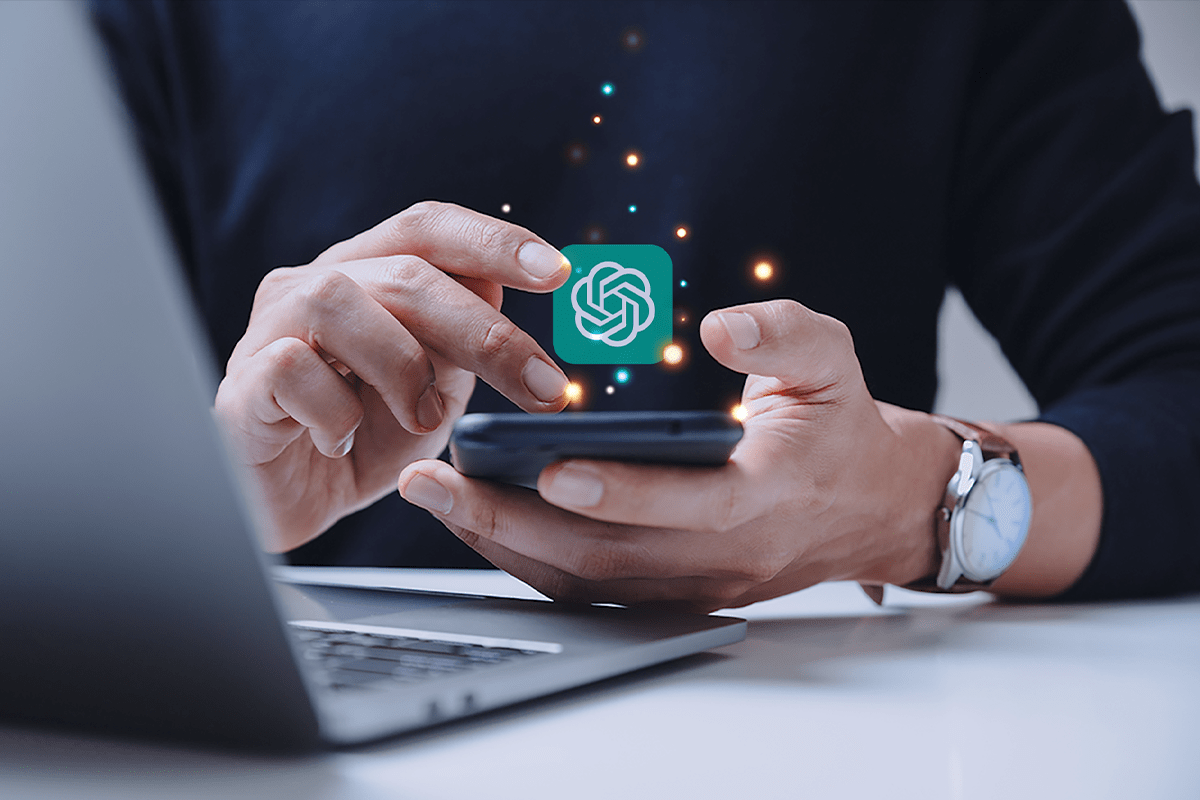If you’re a contact center manager who has been impressed with ChatGPT and everything it makes possible, a natural follow-up question is where you should deploy it.
On the one hand, you could use it internally to make your contact center agents more efficient. They’d be able to ask questions of your company documentation, summarize important emails, outsource the more trivial parts of their workload, and plenty besides.
On the other hand, you could use it externally as a customer-facing application. If you had clients that were confused about a feature or needed help figuring something out, ChatGPT could go a long way towards resolving their issues with minimal attention from your contact center agents.
Of course, there is major overlap in both these options, but there are crucial differences as well. In this article, we’ll discuss the pros and cons of using ChatGPT or a similar large language model (LLM) for contact center agents v.s. using it for customers.
How is ChatGPT Making Contact Center Agents More Efficient?
To a first approximation, a contact center is a place where questions are answered. No matter how clear your instructions or comprehensive your documentation, there will inevitably be users who simply can’t get an issue resolved, and that’s when they’ll reach out to customer support.
This means that much of a contact center agent’s day-to-day revolves around interacting with clients via text, either over a chat interface or possibly through text messaging.
What’s more, much of this interaction will be relatively formulaic. Customers will be repeatedly asking about similar sorts of issues, or there’ll be asking questions that are covered somewhere in your product’s documentation.
If you’ve spent even five minutes with ChatGPT, it’s probably occurred to you that it’s a powerful tool for handling exactly these kinds of tasks. Let’s spend a few minutes digging into this idea.
Outsourcing Routine Tasks
The most obvious way that ChatGPT is making contact center agents more efficient is by allowing them to outsource some of this more routine work.
There are a few ways this can happen. First, ChatGPT can help with answering basic questions. Today, large language models are not particularly good at generating highly original and inventive text, but when it comes to churning out helpful, simple boilerplate, they’re without peer.
This means that, with a little training or fine-tuning, your contact center agents can use ChatGPT to answer the sorts of questions they see multiple times a day, such as where a given feature is located or how to handle a common error. This will free them up to focus on the more involved queries, for which they have a comparative advantage.
In this same vein, tools like ChatGPT can also help contact center agents adopt the appropriate, polite tone in their correspondences. Customer experience and customer service are major parts of being a contact center agent, which means replies must be crafted so as to put the customer (who may be frustrated, angry, and belligerent) at ease.
This is something ChatGPT excels at, and according to the paper “Generative AI at work”, this exact dynamic was responsible for a lot of the gain in productivity seen in a contact center that began using an LLM. The model was trained on the interactions of more seasoned agents who know how to deal with tricky customers, and a good portion of this ability was transferred to more junior agents via the model’s output.
Another place where ChatGPT can help is in writing documentation. This may fall to a technical writer rather than an actual agent, but in either case, ChatGPT’s remarkable ability to provide outlines and quickly generate expository text can speed up the process of documenting your product’s core features.
And finally, ChatGPT is quite good at writing and explaining simple code. As with documentation, it’s doubtful that a contact center agent is going to be spending much time writing code. Nevertheless, your agents might find themselves hit with questions from savvier users about e.g. API integrations, so they should know that they can query ChatGPT about what a code snippet is doing, and they can have it generate a basic code example if they need to.
Learning and Brainstorming
This is a bit more abstract, but ChatGPT has proven remarkably useful in brainstorming study plans, solutions to problems, etc. Though the algorithm itself isn’t particularly creative, when it generates ideas that a human being can riff off of the combination of algorithm + human can be much more creative than a human working by herself.
While there will be many situations in which a contact center agent has a script to work off of, when they don’t, turning to ChatGPT can be the spark that moves them forward.
ChatGPT Plugins for Contact Center Agents
One of the more exciting developments for ChatGPT was the release of its plugin library in March of 2023. There are now plugins from Instacart (for food delivery), Expedia (for trip planning), Klarna Shopping (for online retail), and many others.
Truthfully, most of this won’t (yet) be of much use for contact center agents, but it’s worth mentioning given how quickly people are developing new plugins. If you’re a contact center agent or manager wanting to extend the functionality of powerful LLM technologies, plugins are something you’ll want to be aware of.
Getting the Most out of ChatGPT for Customer Service
ChatGPT is remarkably good for a wide range of tasks, but to really leverage its full capacities you’ll need to be aware of a few common terms.
Large language models are known to be really sensitive to small changes in word choice and structure, which means there’s an art to phrasing your requests just so. This is known as “prompt engineering” a language model, and it’s a new discipline that can be enormously valuable if done correctly.
You can also get better results if you show ChatGPT an example or two of what you’re looking for. This is known as “one-shot” learning (if you show it one example), and “few-shot” learning (if you show it five or six).
Of course, if that doesn’t work you can instead try to fine-tune a large language model. This involves gathering hundreds of examples of the conversations, text, or output you want to see and feeding them all to the model (probably over its API) so that the model’s internal structure actually changes. Though it’s obviously a more significant engineering challenge, it will probably give you the best results of all.
ChatGPT v.s. Chatbots
We in the customer experience field have quite a lot of experience with chatbots, so it’s natural to wonder how ChatGPT is different.
Chatbots are just algorithms that are capable of carrying on a dialogue with customers, and this can be accomplished in many different ways. Some chatbots are extremely simple and follow a rules-based approach to formatting their responses, while those based on neural networks or some other advanced machine-learning technology are much more flexible.
Chatbots can be built with ChatGPT, but most aren’t.
How is ChatGPT Changing Customer Experience?
Now that we’ve covered some of the ways in which ChatGPT is helping customer service agents, let’s discuss some of the ways ChatGPT is used for customer support.

Personalized Responses
One property of ChatGPT that makes it extremely effective is that it’s able to remember the context. When you chat with ChatGPT, it’s not generating each new response in a vacuum, it’s producing them either on the basis of what has already been said or based on information that it’s been given.
This means that if you have a customer interacting with a chat interface powered by a LLM (and are being smart by guardrailing it with a conversational CX platform like Quiq), they’ll be able to have more open-ended and personalized interactions with the tool than would be possible with simpler chatbots.
This will go a long way toward making them feel like they’re being taken care of, thus boosting your company’s overall customer satisfaction.
Automatically Resolving Customer Issues
Earlier, we talked about how contact center agents would be able to leverage ChatGPT in order to outsource their more routine tasks.
Well, one of those routine tasks is resolving a steady stream of quotidian issues. How many times a day do you think a contact center agent has to help a person log in to their client’s software or reset a password? It’s probably not “hundreds”, but we’d bet that it’s a lot.
ChatGPT is a long way away from being able to patiently guide a user through any arbitrary problem they might have, but it’s already more than capable of handling the kinds simple of repetitive, basic queries that sap an agent’s energy.
Automatic Natural Language Translation
One of the surprising places where ChatGPT excels is in fast, accurate translation between multiple languages. Given the fact that English is so commonly used in the technical community, it can be easy to lose sight of the fact that billions of people have either no knowledge of it or, at best, a very rudimentary grasp.
But not many can afford to have all their documentation translated into dozens of different tongues or to keep a team of translators on staff. ChatGPT is almost certainly not going to capture every little nuance in a translation, but it should be sufficient to help a person resolve their issue on their own or to ask more pointed, technical questions.
Dangers in Using ChatGPT
Whether you end up letting your agents or your customers get ahold of ChatGPT first, you should know that it’s not a panacea, nor is it perfect. It can and will fail, and some of those failures are reasonably predictable ones you should be prepared for.
The most obvious and well-known failure is referred to as a “hallucination”, and it results from the way that LLMs like ChatGPT are trained. An LLM learns how to output sequences of tokens, it’s not doing any fact-checking on its own. That means it will cheerfully and confidently make up names, book titles, and URLs.
It’s also possible for ChatGPT to become obnoxious and insulting. The team at OpenAI has done a good job of tuning this behavior out, but recall that these systems are very sensitive to the way prompts are structured, and it can reemerge.
There’s no general solution to these issues as far as we know. You can assiduously construct a fine-tuning pipeline for LLMs that does even more to get rid of toxicity, but ultimately you’re going to have to monitor ChatGPT’s output to see if it’s straying or otherwise being unhelpful.
Quiq specializes in defining guardrails for enterprise businesses who want to harness ChatGPT’s benefits, but are brand protective.
Figuring Out Where to Deploy ChatGPT
Whether it makes more sense to use ChatGPT internally or externally will depend a lot on your circumstances. There’s a lot ChatGPT can do to make your contact center agents more efficient, but if you’re just wanting to offload basic customer queries they can certainly be useful for that purpose.
In our considered opinion, the ROI is ultimately higher for using ChatGPT in a customer-facing way. This will allow your clients to help themselves, ultimately boosting their satisfaction and their estimation of your product.
But whichever way you choose to go, you can substantially reduce the headache associated with managing the infrastructure for this complex technology by making use of the Quiq conversational CX platform. With us, you can get world-leading results, satisfy your customer, lighten the load on your agents, and never have to worry about a rogue answer, compute cluster, or GPU.



